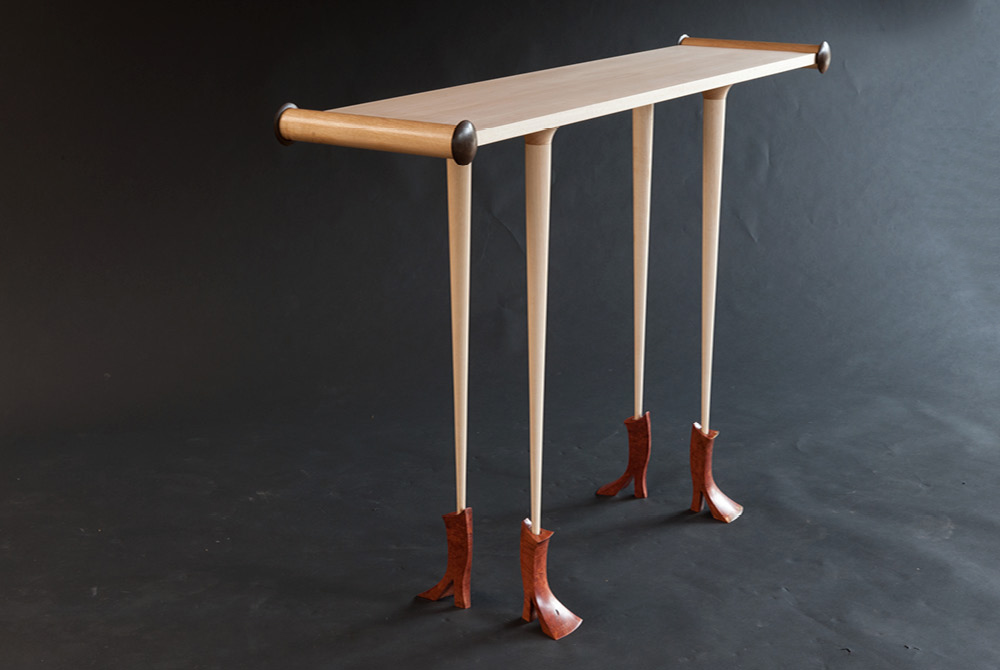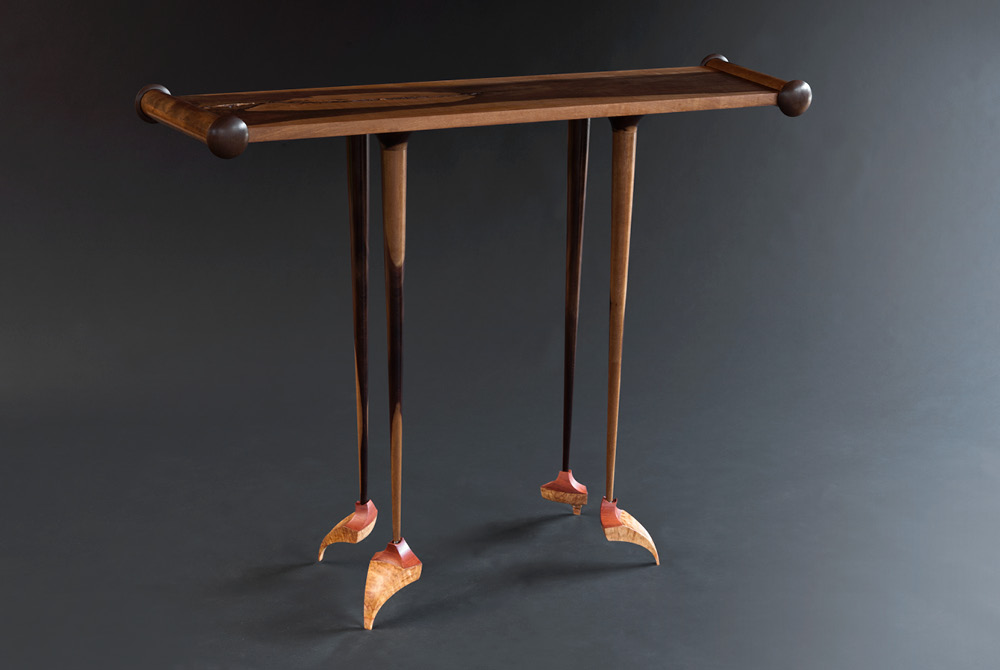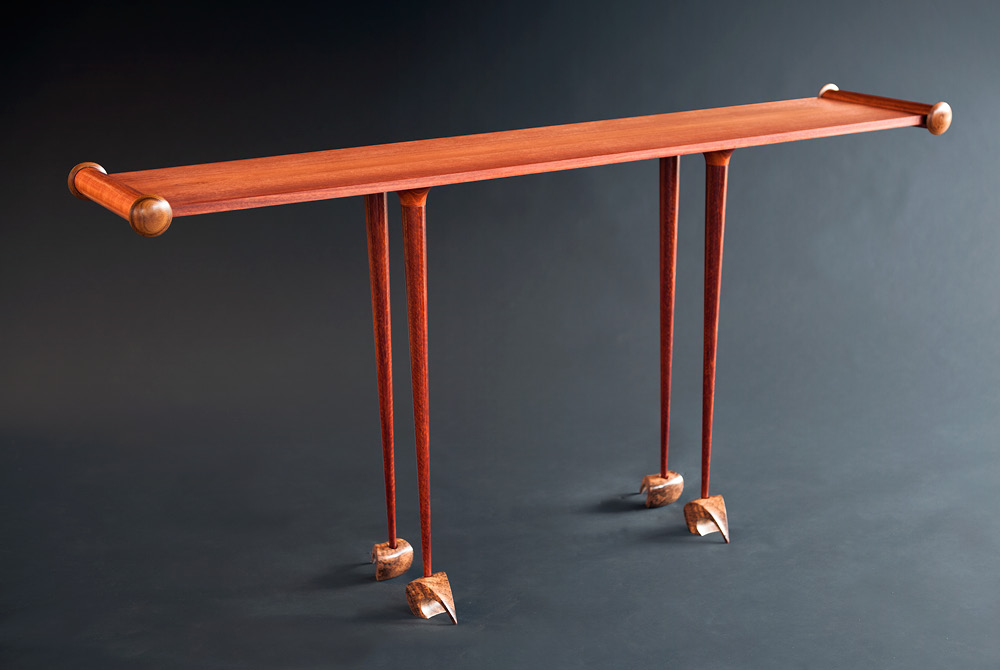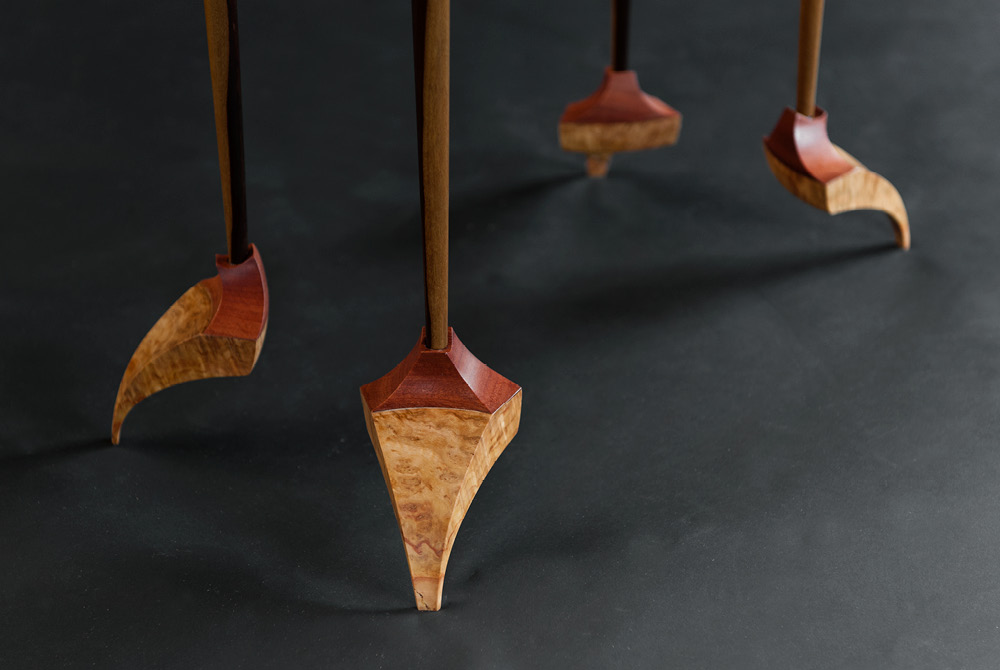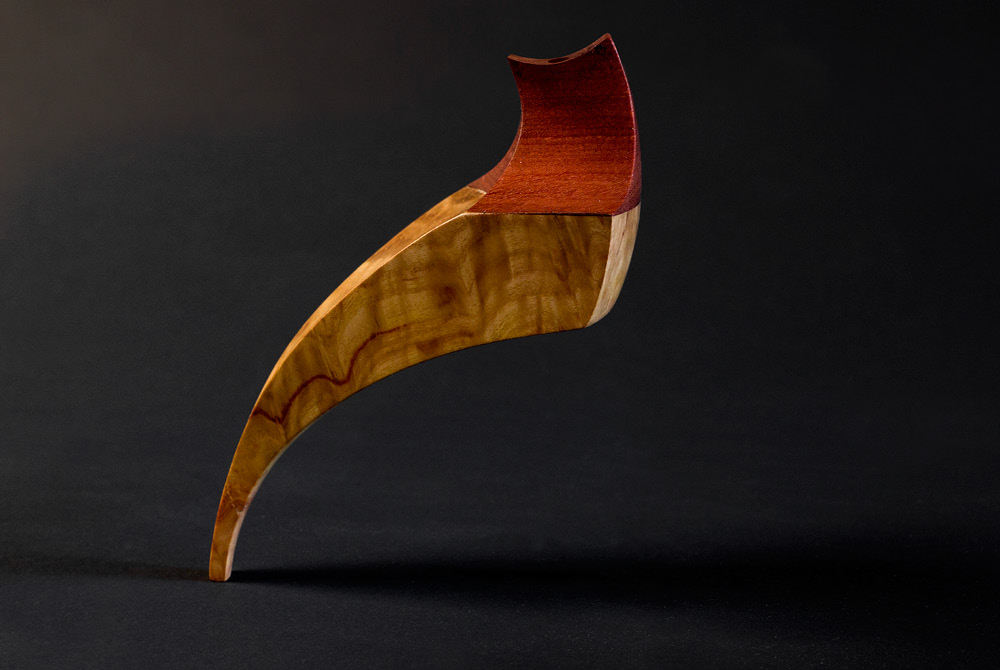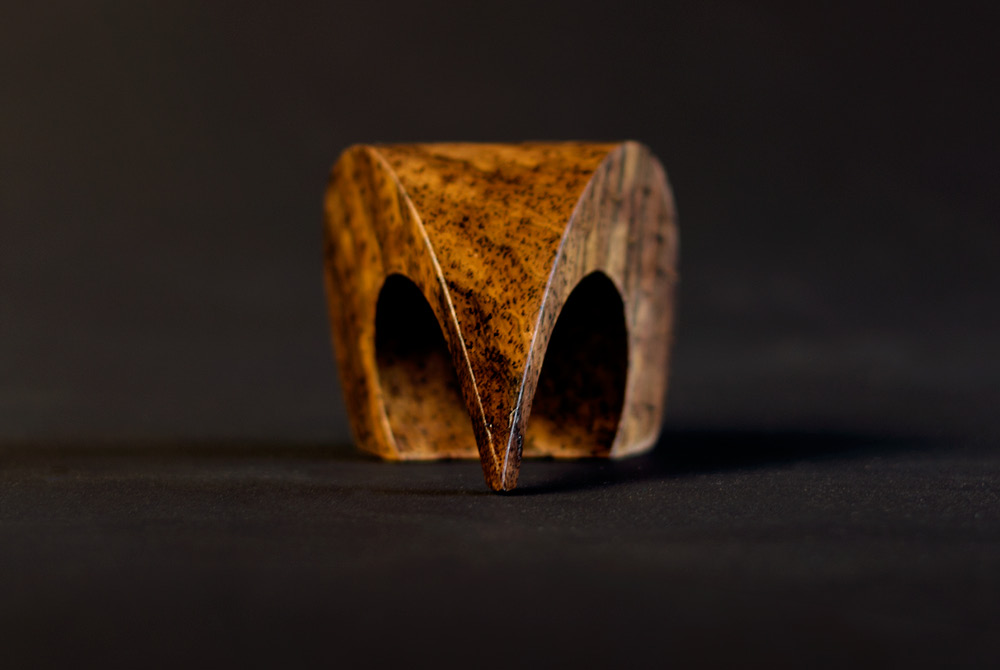With a sense of true whimsy and play, Tables with Shoes provide a welcome break from the austerity of design today. Featuring inter-changeability and pitting fashion against form – if tables have legs, then why not complete with shoes?
I thought the way designer woodworking is now, everything seems so rigid. In a sense that there’s an awful lot of political correctness out there, design correctness and you can’t waver from this or that. I think its time to break out.
Jim Homann and I have been playing with this idea for some time. It’s pretty well all spoof, and real play, basically it’s just pure fun. The initial inspiration came from the Coat Stand we make that has pegs like a cabriolet leg.
These tables have become intensely interesting, they’re hall tables about 300mm wide and up to 1500mm long, with a variety of timbers used for the tops and sockets. All are straightforward tables with the same legs, with threaded rod extending from the bottom. And we have a number of different shoes that we can twist on and off to create different looks.
At the moment we’re in a very expansive mode and when we pull it back we might become a bit more practical, but you can do some strange things when your designing mind locks into play mode. Sometimes these shoes can look almost like the claws of animals.
I think people might buy the shoes. If you buy a table then you might need two sets of shoes. I’m being whimsical now, and saying, “well you think of the history of furniture. There has always just been bare feet. They need some shoes.”
Early in the project I decided I should consult the bastions of shoe fashion, the women who wear them. Strangely enough I didn’t get as much help as I thought I would. Jim and I checked a lot of web sites, we googled shoes and this and that, but our shoes get a bit more abstract. Sure it’s not a shoe, you couldn’t wear it but it gets the idea across.
I designed the shoes so they could be made as multiples from a single block. When we make the various shoes they come like a pizza, then it gets cut in eight or twelve pieces. There are so many ways of going, with texturing and so on, with the twelve pieces from the pizza. Four of one type make a set, then add paint, silver underneath, or anything else that works. The different sets of shoes might be on a shelf, apart from the tables, so you can change the shoes on a table, they twist on and off quite quickly.
You could change the height of the table with different shoes and you can twist them so the table appears to be dancing. You could take images of it in different positions and if we take them quickly enough they could form something like an animation, they will move.
The shoes are turned in stunning and extravagant burl, some are painted, decorative and colourful. There is a set of exciting big stilettos, quite high with stainless steel coming down to a very sharp point. Rodney Hayward talked to me about that juncture of the floor and the vertical, the point where the load-bearing surface touches the floor, touches the earth and how we read that, whether the table levitates, or sinks in or just floats neutrally. He thought these were lovely, with that elegant, beautiful point meeting the plane of the floor.
Rodney also thought that in the past, the best we’ve ever seen are socks, not shoes. He said “it really makes a difference what you put on the end of it, say Ebony or a band of something, it’s amazing the difference it makes to the visual presence of the piece.”
I asked David Boucher, renowned for his use of unfamiliar materials, what he used as pads for feet, and he rattled off a long list of materials he uses that I’ve never heard of. He and his people make them up, if they can’t source something directly in the material they want, to the standard they require, they simply go about designing and making it themselves. But just the consideration, the deep consideration is quite sweet.
Behind the scenes culturally, I have a feeling that the fashion side of things is going to grab people, maybe not the intellectual side. There are far more ideas than we could ever do, a table fashion parade would be cool. We could go on and on with this, put in LED lights and all kinds of stuff. At a certain point you think enough is enough.
Tables with Shoes is a project we are quite pleased with, an easy entry into the fun and the play, thinking outside of the shoe box so to speak.
Excerpt from conversations between David Mac Laren and Stan d’Argeavel.


